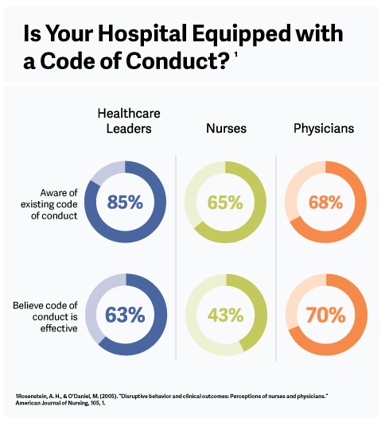Discussing the need to deal with disruptive behavior on the part of physicians, one of the most prominent researchers in the field, H. Alan Rosenstein, MD, writes: "The greatest potential for success in the intervention process is to intervene before a disruptive event actually occurs. Once an event occurs the damage is already done and the intervention takes on more of a confrontational punitive nature. The goal should be to focus efforts on preventing such events from occurring.”1
Key Elements of A Prevention Plan
A key element is establishing a “prevention plan,” “a clearly outlined approach for making all employees, including physicians, aware of what constitutes disruptive behavior, as well as the consequences of any transgressions,” as Brian L. Santin, MD, and Krista L. Kaups, MD write in the Bulletin of the American College of Surgeons.2
Santin and Kaups lay out some basic elements of such an approach:
- “Expected behaviors should be
clearly defined - Consequences for divergence from these behaviors should be delineated
- Repercussions should be in accordance with the severity of the incident
- Consequences for repeat behaviors should increase in a step-wise fashion
- Clear communication should occur and
be documented after each and every reported incident”
Looking at the “nitty-gritty” of a prevention policy, employment attorney Judith Holmes and healthcare-business consultant Leigh Olson,
in an article for the website of the Medical Group Management Association, lay out areas of definition and prohibition. The policy should:
- "Define unacceptable behavior.
- Define and describe, step-by-step, the procedure the group or organization will use to investigate complaints.
- Define and prohibit sexual harassment and harassment on the basis of race, gender, religion, disability and all other categories protected by federal and state law.
- Prohibit workplace violence. The point should include “a description of prohibited conduct as well as a clear statement [indicating] violence or threats of violence must be reported.”
- Prohibit retaliation against any employee who makes a complaint about a disruptive physician.”3
Dr. Rosenstein adds a note of caution and recommendation: “Having a guideline or policy by itself is not enough,” he writes. “The two biggest barriers to policy success are lack of consistency in application and lack of follow through.... The obvious recommendation is to have one universal disruptive behavior policy which needs to be consistently applied and reinforced across all levels of the organization.”4
We Can Help
For more on disruptive behavior and how to deal with it, see our article “How to Successfully Manage the Obstacles of a Disruptive Physician.”
Check out our Physician Intervention page to see how we can help your organization combat the complications of a disruptive physician or contact us to learn more.



